#brachiopod fossils
Explore tagged Tumblr posts
Text
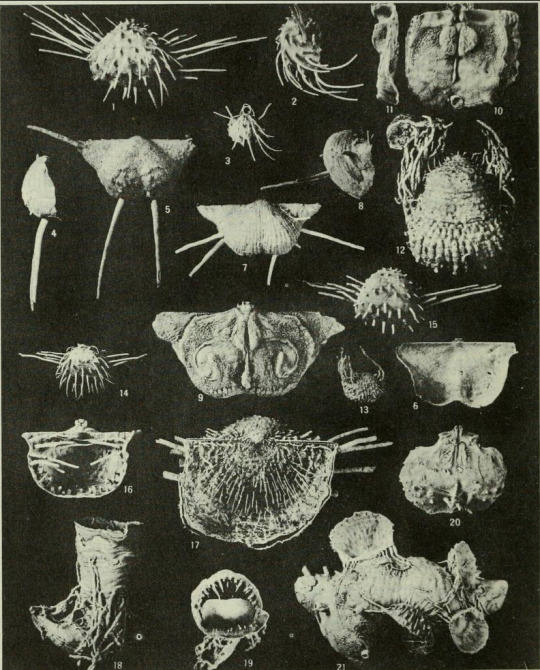
"Silicified brachipods. All specimens from Permian limestones of the Glass Mountains, Brewster County, Texas."
From Fossils: An Introduction to Prehistoric Life (1962) by William Henry Matthews.
5 notes
·
View notes
Text
So apparently it is ‘Fossil Friday’:) I like this term!
I cracked open that one from my last post and was rewarded with my favorite genus of Brachiopod, ✨ Leptaena ✨!! so beautiful..
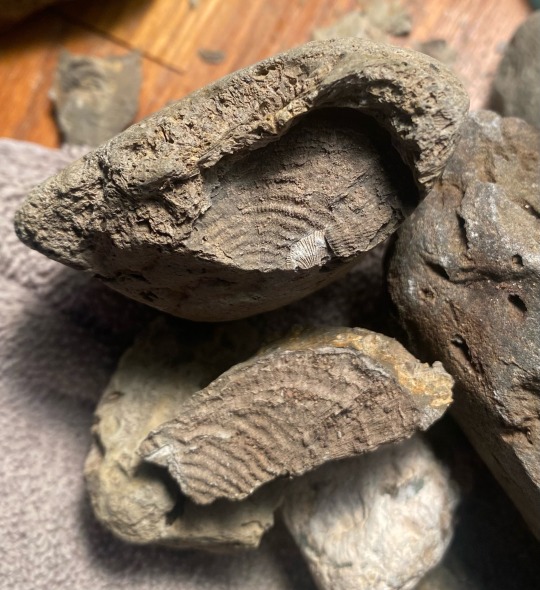
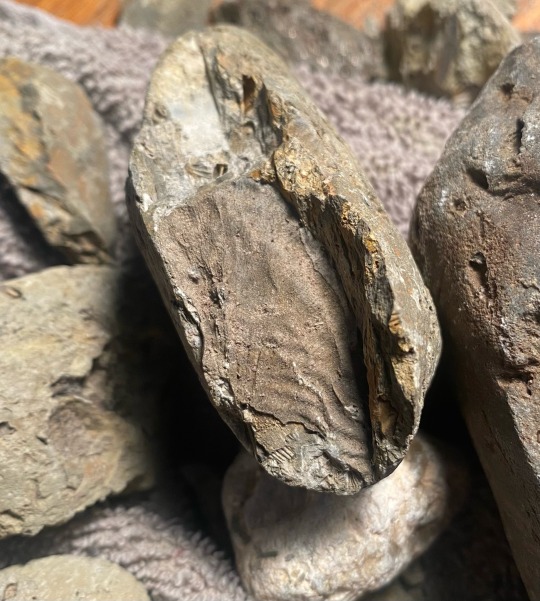
Also I cracked open this mush
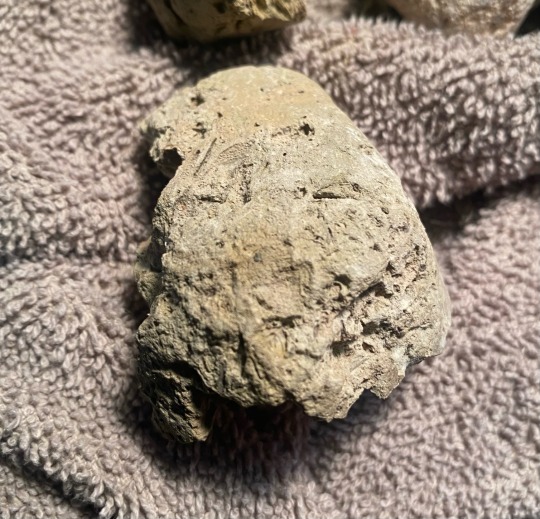
I managed to weasel this lady out!!


I am honestly not too sure what I am looking at in the 2nd photo, I am 93% sure this is half of a Brachiopod, so I am guessing those are the innards, so I am also guessing that that circle is the pedical, maybe? It is just so large?. I have never found one with the inside visible like this. And I just can not find any references I need .. anybody know?
Also another Leptaena was also in there

And an adorable Bryozoan sheet that makes me crave honey:)
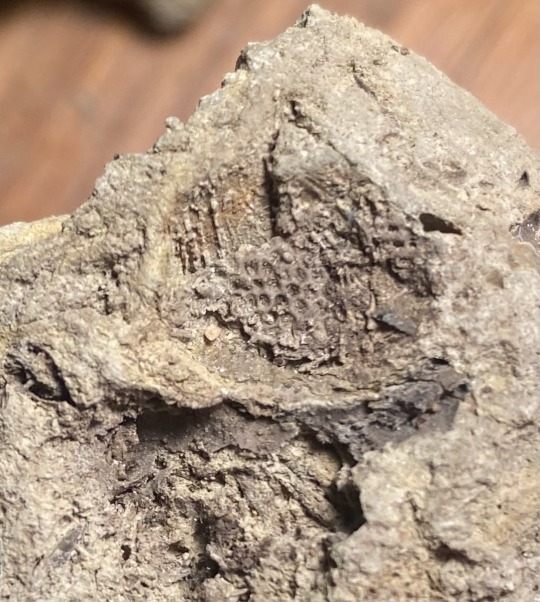
And here is a better photo of the chisel project I was working on the other day! I am a little stuck on this one, I really do not want to damage the Crinoid, it seems so fragile..

#fossil friday#devonian fossils#devonian period#my fossils#amateur paleontology#paleontology#fossils#fossil#fossil hunting#fossil collecting#geology#devonian#fossilblr#brachiopod#devonian fossil#brachiopods#bryozoan colony#bryozoa#bryozoans#bryozoan#crinoids#crinoid#rocks#rockblr#brachiopod fossils#earth science
20 notes
·
View notes
Text


he is In His Element 💪🪨
Idk why it’s so hard to see but in the first pic the rock he’s laying on is absolutely packed with brachiopod fossils
#was at an Ordovician limestone formation yesterday fossil hunting hehe#for like. 5+ hours#so naturally I had to bring Cole#halcyonia#lego minifigures#ninjago#Cole ninjago#cole brookstone#paleo#brachiopods
57 notes
·
View notes
Text


Fossil hunting with Flynn! I love how much Flynn wants to be involved in whatever I do - no matter how dull or pointless it must be in his eyes! We were in a wide open field when I found this... Flynn was completely free to run about & amuse himself but apparently he'd much rather come sit by my side & stare at me, while I stare at the ground, searching for fossils of brachiopods. This one was a good size... It always amazes me how much detail is preserved, the creature that left this fossil was alive somewhere around 440-420 million years ago! Anyway, we did also wander through the woods & play in a giant puddle together, so Flynn had fun too!


68 notes
·
View notes
Text
NOT COUNTING ROCKS (unless it’s a specific fossil from a time period you can name) or buildings (you cannot hold those)…
#Making my own because of the skew of the last one lol#My answer is still either acheulean hand-axes (800k years old) or Devonian/Silurian brachiopod fossils (350-450 million years old)#Depending on what u count#history#polls
97 notes
·
View notes
Text
FOSSIL FRIDAY and Happy December!
New month, new topics, possibly fresh snow in the next two hours (at least here in northern Utah).
Today, we are going to learn a little about index fossils!

Yes, Kirk, index fossils. Index fossils are part of Earth's record book. They are plants or animals that are characteristic of a particular span of geologic time or environment (usually both!). To be considered an index fossil a specimen must fulfill these 4 criteria:
1.) They must be DISTINCTIVE. If you can't identify it easily, it doesn't really help you much. Take Mucrospirifer, a type of brachiopod. That sucker is hard to miss!
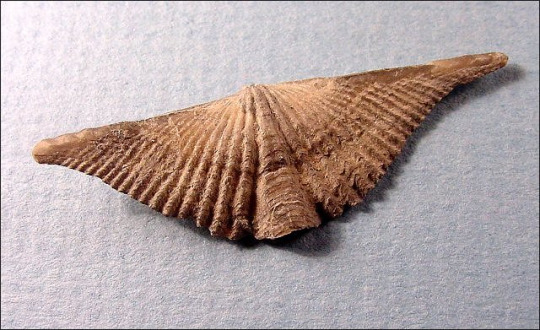
2.) The must have a WIDE geographic range. If it's only found in, say southern Alberta, Montana and Wyoming, it's not terribly useful to anyone else. (Sorry Rexy, you're out!)
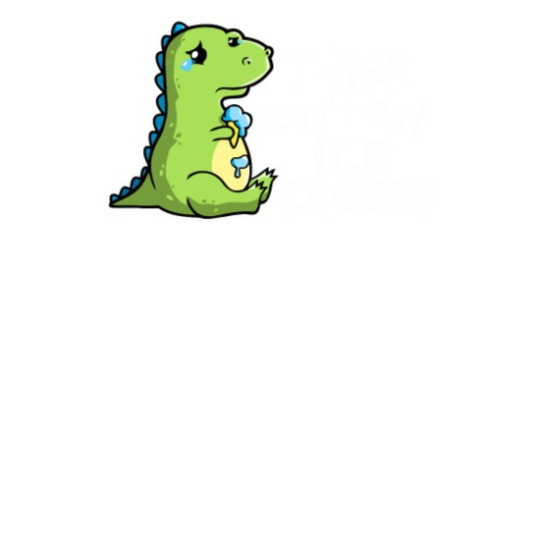
3.) It must be ABUNDANT. There has to be a lot of them. That's why most macrofauna doesn't work. There just aren't enough complete specimens. However, trilobites like this Elrathia are freaking EVERYWHERE.

4.) Finally, they must have a SHORT range through time. If you last too long, it makes it hard to pinpoint how old the rock is. The ammonite, Pavlovia, only lived during the Late Jurassic Period.
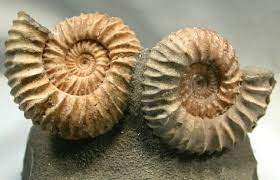
Index fossils are the basis for defining boundaries in the geologic time scale through a branch of geology called biostratigraghy (one of my areas of study. Love me some biostrat.) Examples of good index fossils include trilobites, brachiopods, and ammonites. All this month we are going to focus on one of these index fossils: Ammonites!
And, as always, if you like what you see here and want more content, you can always check out Minerals, Rocks and Fossil Talks on these other platforms:




Just look for this symbol below and you've got the right place! Happy Friday!

#paleontology#fun facts#fossils#geology#stratigraphy#biology#ecology#trilobites#ammonites#brachiopod
197 notes
·
View notes
Text






The find from yesterday’s trip on my local paths from fields into the muddy forest tracks.
Found this brachiopod mussel in black flint rock, also with the previous shown piece of echinoid and two of the crinoid pieces.
Not knowing the genus or alike of this mussel, not alike like other from before, therefore an part of the rock is missing, fractured of the mostly right side seen from the shell rims going further, so the brachiopod shell was more in their length.
I’m doing it again if some frost coming back on the end of the year. Planning to to it on new year’s morning or the day after.
#fossils#fossil hunting#flint fossil#brachiopode#geology#fossils in germany#fossil collecting#fossils 2024
12 notes
·
View notes
Text





Copper Pendant Edition!
I found out I need new front and rear brakes, so if anyone is in a position to do early gift shopping for a jewelry fan, check out my etsy shop?
And if you like my style but none of the colors suit, drop me a line. I can't do custom work until my hand heals, but I do have a lot of finished pieces that aren't in my shop.
Thank you!
#magpiesmiscellany#wirewrap#wirewrapping#wire wrapped#labradorite#fossil#brachiopods#lapis#moonstone#citrine#kyanite
7 notes
·
View notes
Text
Early Silurian of south western Poland

#biology#palaeoart#fossils#geology#paleoart#sciart#science#palaeontology#paleozoic#paleontology#silurian period#nautilus#brachiopods#crinoid#orthoceras#endoceras#Lschnacanthiformes#Platystrophia#Baltocrinus#cephalopod
18 notes
·
View notes
Text




The new mussel prints on flint stones.
Nice size, the biggest from all brachiopode finds with no cracks.
Nice in the grey color, i am so glad this broke so smouth from its surrounding stone to held its form.
Please look into the alike post of it in my other side-blog.
19 notes
·
View notes
Text
look there's not ganna be any art for the next couple weeks (exams >:|)so I offer my favourite specimens in my collection :D
(did anyone think a rock post is what would substitute the lack of art)
gryphea - brachiopod looking bivalve (silly)

brachiopods (unspecified) - both jurassic in age found in the same place a year apart


obsidian furnace slag - admittedly this isn't in my collection bc it's full of lead but it is pretty

I've got a lot more n some rlly nice corals (if people wanna see I'll share em but I don't have the photos sitting on my phone) but I'd love to find an ammanoid or trilobite n hopefully in the spring I'll get some neat igneous specimens
tbh I think my favourite are the fossils of the small stuff yk, I'm never ganna find a full dinosaur but I will find a full brachiopod or coral
6 notes
·
View notes
Text
AAH this is such a hard question haha

Thanks so much for asking @insectsinthestars ! I felt like this required some photos!
I truly do not think I have a favorite, I tried to pick one but I could not. I love them all so much. Here are a few that mean the most to me though!
This blob of Bryozoans! This one is special to me because it is a chunk of just pure Bryozoans, it is actually super light and REALLY delicate. Every time I set it down, it sheds some particles. The fact that this survived the elements for potentially hundreds of millions of years makes my heart tighten up.
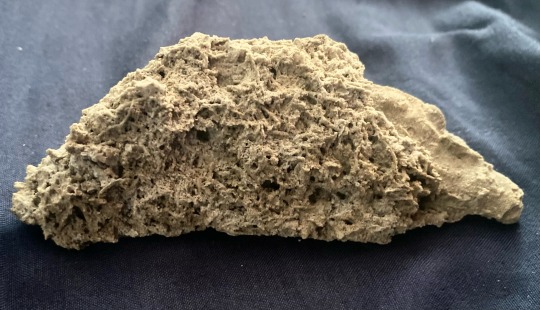
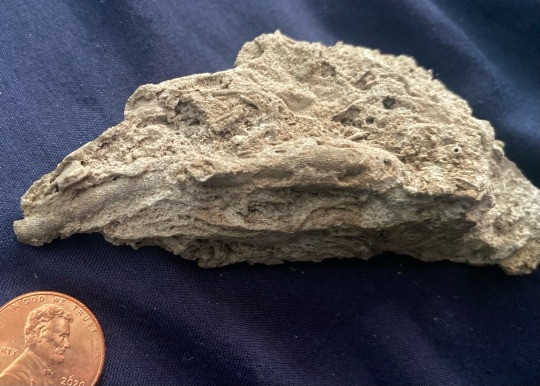
These are also the largest branches I have found, by far! (Bryozoa are tiny tiny animals that live in colonies, similar to coral)
Of course, I have to include my ONE trilobite haha. Yeah, that was a good day. I kinda love that it is just his little booty, hehe. Maybe one day I will work up the courage to attempt to chisel the rest of it out, I just reallllly do not wanna damage it. But yea.. man, do i cherish it
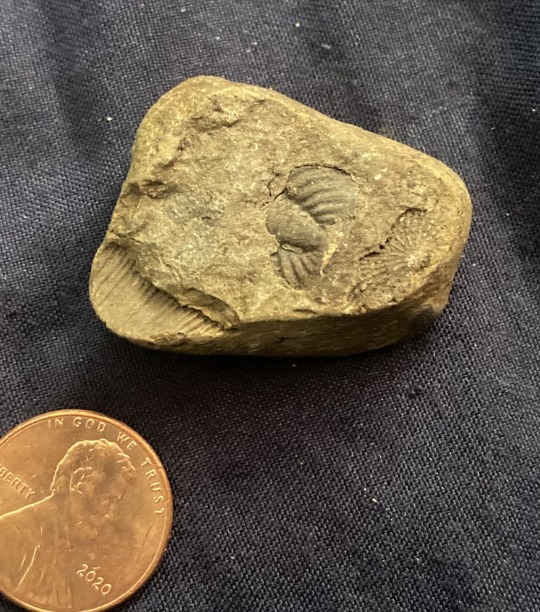
And I would honestly feel bad not including any Brachiopods, since they make up 80% of my fossils. But again, I really can’t choose a favorite:( I have a lot and I love them all. So these one’s are from the very beginning of my fossil hunting days (2019) and I can still remember finding them and crying in the woods :’)


#devonian period#my fossils#bryozoan colony#bryozoa#bryozoans#trilobite#trilobites#devonian fossils#devonian fossil#devonian#fossilblr#rockblr#fossils#fossil#amateur paleontology#paleontology#brachiopods#brachiopod#rocks#geology#earth science#natural science#nature#fossil hunting#fossil collecting
22 notes
·
View notes
Text



Happy National Fossil day!! All of these beauties found in Pennsylvania :)
34 notes
·
View notes
Text

Flynn likes to be involved with everything I do. If he sees me crouch down to look at something &/or pick it up, he likes to come & inspect it as well. In case it's interesting. Or edible. Or both.
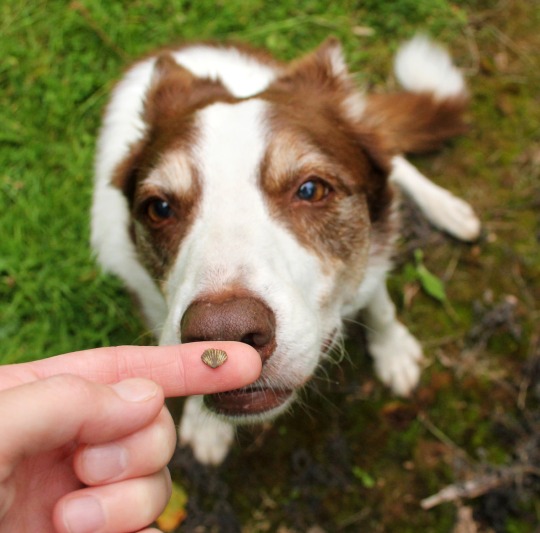
In this case, I'd found a fossil. According to Flynn this falls in the "Not Interesting" category but he gave it a polite sniff all the same. Like I politely praise him when he finds & shows me puddles & molehills. We humour each other.
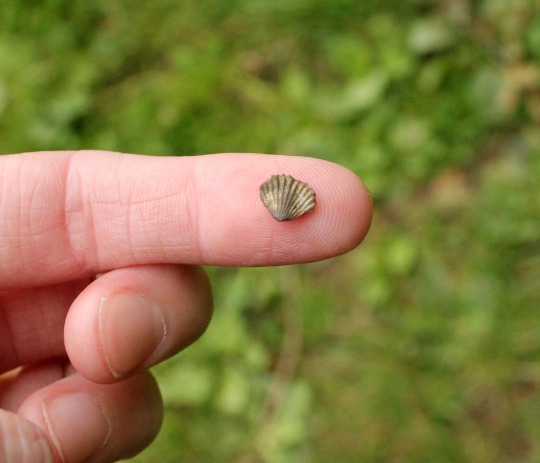
Such a teeny tiny fossil! It's one of the smallest I've found. Probably at least 420 million years old, which is just completely wild.
#I've got a fair sized collection of fossils now#mostly either brachiopods - which look like bi-valve molluscs but aren't... & corals#some of the shell fossils are very well preserved & almost look like they came off a beach that day!#I find them on farmland - ploughing turns the soil & they pop up to the surface. also there are 1 or 2 old quarries in the woods#this one was on the footpath - I bent down to pick up Flynn's toy & spotted it#silurian#fossil#shell#england#dog#flynn
227 notes
·
View notes
Text
The Great ACT-NSW-NZ Trip, 2023-2024 - Otago Museum, Dunedin
After a fun hour nosing around the two rooms of Geology Dept. Museum at the university, @purrdence and I walked down to the Otago Museum, which had many more rooms but fewer fossils on display (and some of them were on loan from the university).



All joking aside, however, the Otago Museum has delightful exhibits, including some very interesting dioramas, a wing in the style of Victorian 'Great Chain of Existence' exhibits, and a live butterfly avairy.







And of course more geology stuff such wind-polished Ventifacts, one of the spherical concretions from Moeraki, and what, for 50 years, was thought to the last and only Takahē specimen in the world.




Admittedly the butterfly house operates at the temperatures and humidity of the wet tropics, which rapidly became unbearable, but I don't enjoy the heat. And the biology wing did include what we might term 'Adventures in Victorian Taxidermy'.



Those first two are supposed to be a Tasmanian Devil and a Koala, incidentally.
#Otago Museum#Dunedin#bad taxidermy#museum exhibits#butterfly house#museum collections#javanese rhino#escaped circus lions#traumatised ferret#fossil shark#brachiopod#koala#tasmanian devil#plesiosaur#elasmosaur#new zealand fossil#Dunedin NZ#takahē#ventifact
4 notes
·
View notes
Text
Fossil Friday: Brachiopods
Brachiopods are any interesting animals. They look like clams and other bivalves but are more closely related to cuttlefish.
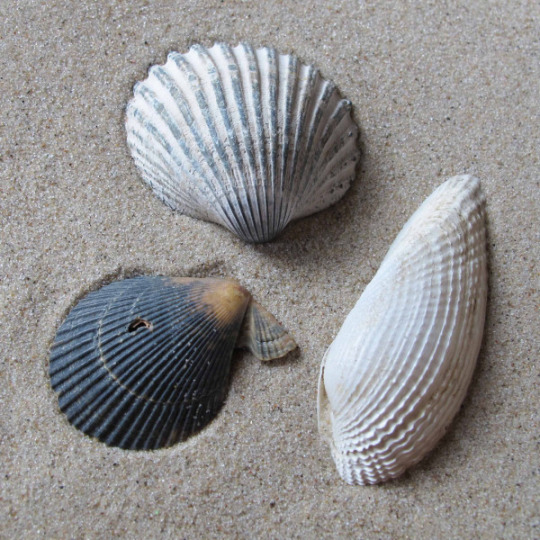

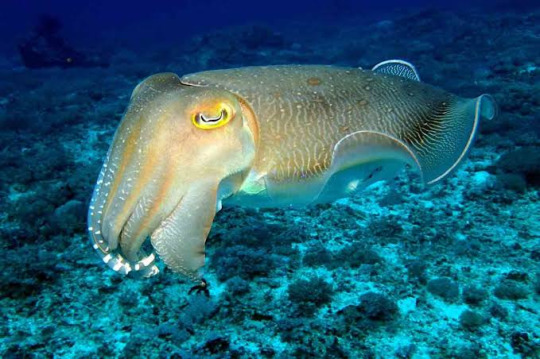
6 of the 8 families of brachiopods existed in the Ordovician Period. Here's a few of the brachiopods you'll find in Ordovician rocks:

Platystrophia

Herbertella

Rafinesquina
Where did brachiopods come from? Well, one hypothesis, the "brachiopod fold" hypothesis suggests that brachiopods evolved from an ancestor similar to Halkieria, a slug-like animal with "chain mail" on its back and a shell at the front and rear end. The hypothesis proposes that the first brachiopod converted its shells into a pair of valves by folding the rear part of its body under its front.
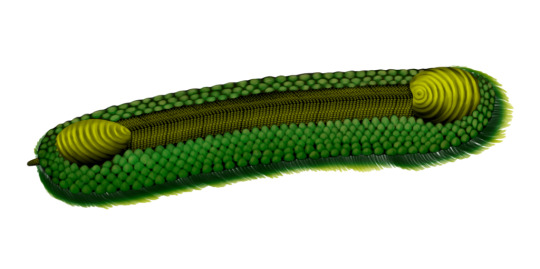
Halkeria
However, fossils from 2007 onwards have supported a new interpretation of the Early-Cambrian tommotiids, and a new hypothesis that brachiopods evolved from tommotiids.
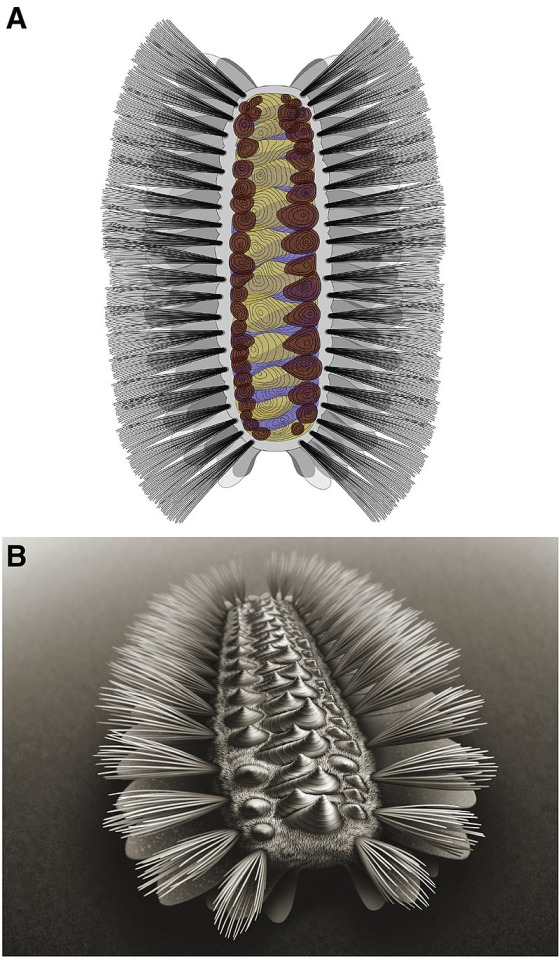
Studies seem to suggest that Halkeria is closer to molluscs while tommotiids are more closely related to brachiopods.
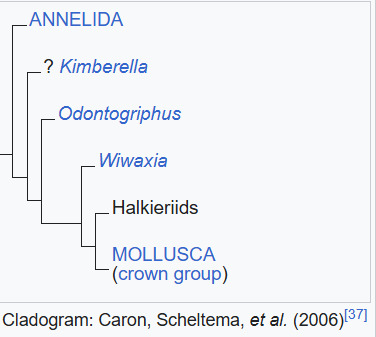

Sadly, at the end of the Paleozoic, 2/3 of the brachiopods wet extinct and they haven't been the same since. Knoll and Bambach concluded that brachiopods were one of several groups that were most vulnerable to the Permian–Triassic extinction, as all had calcareous hard parts (made of calcium carbonate) and had low metabolic rates and weak respiratory systems.
Today, there are three classes of brachiopods left: Lingulata,

Craniata,

and Rhynchonellata.

Tune in Monday to learn about an extraterrestrial event that occurred in the Ordovician Period. Fossilize you later!
14 notes
·
View notes